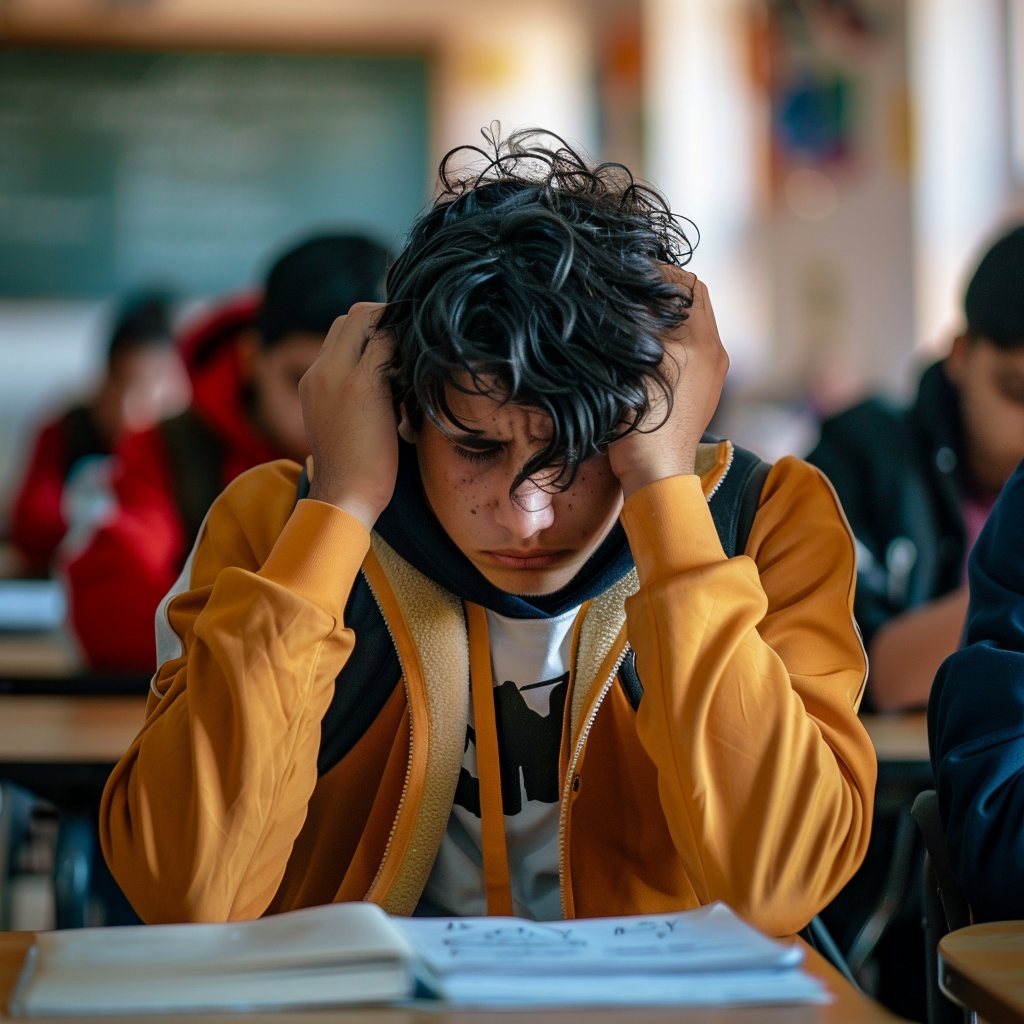
In the shadows of our communities, a battle rages on, often unnoticed by those who are fortunate enough to escape its clutches.
It is a battle for the future of our at-promise youth: young individuals who face numerous obstacles on their path to a better life due to poverty, crime, and despair.
According to At-Promise Youth Programs (2023), in the next twenty-four hours:
- 2,795 teenage girls will become pregnant.
- 3,506 teens will run away from home.
- 15,006 teens will use drugs for the first time.
- 1,439 teens will attempt suicide.
These statistics are distressing, at the very least. Countless youth across the globe yearn for a lifeline, an opportunity to break free from this cycle of depression. Local programs such as the YMCA, church-based organizations, Job Corps, and other privately funded programs designed to lift these children out of their situation are not always fully accessible. These programs, often created with the noblest intentions, can offer a glimmer of hope to these vulnerable individuals. However, the unfortunate reality is that many of them are severely underfunded and are struggling to meet the demands of the growing number of youths seeking their support.
In this blog, we aim to shed light on the harrowing reality faced by programs for at-risk youth. We will discuss the challenges they confront due to the scarcity of resources, why some youth may not take advantage of these available resources, and the profound impact it has on the lives of countless young individuals. It’s time to ignite a conversation, to spark compassion, and to rally support for those who are most vulnerable.
Nobody can go back and start a new beginning, but anyone can start today and make a new ending.
— Maria Robinson
The Statistics
Where does the despair begin?
At-Risk Youth Programs (2023) have identified a few culprits that appear to push adolescents towards a cycle of negative consequences.
- Lack of a consistent discipline system at home.
- Poor school attendance/truancy.
- Having a disability or chronic illness that parents do not adequately address with professional treatment.
- Lack of sufficient community support services aimed at helping at-risk youth.
- Living in high-crime, low-income areas.
- Lack of access to community or vocational colleges (no financial help available, higher education institutions too far away).
- Lack of parental involvement/disengaged parents.
- Moving frequently due to being evicted, job loss, etc.
 Of course, this list is not exhaustive. We must not forget that many challenged youths also suffer from mental illness. According to the World Health Organization (2023), depression disorder is the fourth leading cause of disability and illness in teens between 15 and 19 years old.
Of course, this list is not exhaustive. We must not forget that many challenged youths also suffer from mental illness. According to the World Health Organization (2023), depression disorder is the fourth leading cause of disability and illness in teens between 15 and 19 years old.
Anxiety disorders (social, panic, phobia) are the ninth leading cause of disability in at-risk youth behavior in teens between 15 and 19 years old.
Unfortunately, many youths encounter several of these challenges simultaneously, if not all of them. It may seem impossible to break out of the cycle, especially for low-income families who do not have the resources to stop it…but it is imperative that we find a way.
The Challenges
The CDC reports that as much as 95% of high school students spend most of their day in school – this means that our schools can take part in resolving to change this cycle of despair for at-promise youth, right? (2021). Unfortunately, it is not that simple.
In 2016, public schools in the United States were underfunded by $46 billion a year (or $60 billion, when adjusted for inflation to 2020 dollars). By 2021, that annual deficit had grown by $25 billion (CNN, 2022). These statistics prove that not only are our public schools grossly lacking in the financial sense to provide what children need, but also that additional help is not readily available for those who may desperately need it.
Resources are not only lacking in our schools…many larger cities have created extra-curricular programs for youths that range from a safe place to go after school to a residential, inpatient program. Some of these programs are funded through the government as well as privately funded – however, due to budget cuts and inflation affecting financial solvency across the country, many are not receiving the funds they require to operate successfully. (We must also note that youth in rural areas struggle differently to even gain access to these types of programs due to transportation, financial, and availability issues).
As an example, the Department of Labor is currently considering severe budget cuts that will absolutely obliterate the budget to run an existing youth program in New York. Click here to read more: https://spectrumlocalnews.com/nys/capital-region/news/2019/04/08/at-risk-youth-program-in-jeopardy-of-federal-funding-cuts
These budget cuts are annihilating opportunities for at-promise youth to escape that vicious circle, and many of them cannot even qualify for assistance to begin with. Did you know that many at-promise youth cannot take advantage of available assistance because:
- Limited Information: At-risk youth and their families may not have access to comprehensive information about available programs due to limited resources, inadequate communication channels, or a lack of outreach efforts by program organizers. As a result, these individuals may remain unaware of the support and opportunities that could potentially transform their lives.
- Stigma and Misconceptions: There can be a prevailing stigma associated with seeking assistance or being labeled as “at-risk.” This stigma can discourage youth and their families from reaching out to programs due to fears of judgment, social ostracism, or a perceived loss of autonomy.
- Barriers in Communication and Access: Economic disparities, language barriers, limited internet access, and geographic isolation can pose significant challenges for at-risk youth and their families in accessing programs. Lack of transportation options, especially in underserved areas like a rural community, can further impede their ability to reach program locations or participate in remote services.
- Insufficient Funding and Capacity: Many programs for at-risk youth struggle with limited funding and resources. This can lead to a lack of staff, inadequate infrastructure, and limited program capacity, making it challenging to accommodate all those in need. The resulting waitlists or restrictions on eligibility criteria may further limit access to these programs.
At-promise youth are most in need of assistance to escape their situations but are often the least able to access those services. So how do we fix this?
See how BTA is Reaching Out – Donate Now
The Effect
 We have found that the first step in the journey is reestablishing a strong identity. Sometimes we don’t realize how dramatically our perception of ourselves affects what we CAN do versus what we think we CANNOT. Many youths don’t know where to go for help, don’t have the motivation or confidence to move themselves out of their circumstances, aren’t aware of the tools available to do so, and don’t have a roadmap to follow so they stay on track.
We have found that the first step in the journey is reestablishing a strong identity. Sometimes we don’t realize how dramatically our perception of ourselves affects what we CAN do versus what we think we CANNOT. Many youths don’t know where to go for help, don’t have the motivation or confidence to move themselves out of their circumstances, aren’t aware of the tools available to do so, and don’t have a roadmap to follow so they stay on track.
When someone experiences identity displacement, they often struggle to establish a strong sense of self-esteem and belonging. This can lead to feelings of alienation and disconnection from their community and peers, but most importantly – their own potential. Without a solid foundation of identity, these youths lack the confidence and motivation necessary to pursue their goals and excel.
Furthermore, identity displacement often exposes at-promise youth to adverse environments or negative influences that perpetuate cycles of negativity. These environments may promote harmful behaviors such as involvement in criminal activities or substance abuse. Consequently, these youths may find themselves trapped in a cycle of limited opportunities and negative outcomes, hindering their potential for success.
Overall, identity displacement can prevent an escape for at-risk kids by undermining their self-esteem, eroding their sense of belonging and purpose, and exposing them to detrimental environments. Addressing this issue requires providing support systems that foster a positive sense of identity and create access to opportunities that empower these youths to overcome adversity and achieve their full potential.
We can become the product of our choices, and not remain the victim of our circumstances.
The Solutions
What Can You Do?
Spread the word and make a difference. Leverage your social media networks to reach countless individuals. Engage by sharing your expertise or supporting a program you believe in. If direct involvement isn’t possible, consider contributing to deserving causes aligned with your values. Numerous programs are seeking assistance and would greatly benefit from your support.
What Are We Doing?
We have found that building a strong sense of self through physical skill acquisition is an excellent building block to elevating confidence and ultimately, building resilience both mentally and emotionally. Martial arts is a comprehensive option that teaches physical fitness, self-control and emotional regulation, confidence, self-discipline, accountability, respect, and countless other advantages that ultimately begin to change this cycle of hopelessness.
Once a consistent training schedule has been established, we have seen youth transform from identifying as an “at-risk” individual to “a martial artist”. The focus shifts away from hopeless circumstances that they have been conditioned to live in … to their own potential to move up the ranks and achieve what they see on their own individual roadmap to success. Martial arts provide the opportunity to move past challenges and focus on possibilities and is a continuous journey of self-improvement.
We must confront the lack of resources plaguing programs for at-risk youth, and strive to create a brighter, more inclusive future for all. Together, we can advocate for a world where no one is left behind, where resources are plentiful, and opportunities for growth and transformation abound.
References:
At-Risk Youth Programs. (2023). Retrieved from https://atriskyouthprograms.com/information-on-at-risk-youth-statistics/
Zdanowicz, C. & Yan, H. (2022). US public schools get a D+ for poor conditions, and experts say problems are getting worse. Here’s what kids are facing. Retrieved from: https://www.cnn.com/2022/09/18/us/school-conditions-2022/index.html#:~:text=The%20school%20funding%20gap%20keeps%20getting%20worse&text=And%20the%20gap%20is%20widening,had%20grown%20by%20%2425%20billion.






